TIPS FOR GROWING DAHLIAS IN HOT WEATHER
Climate change is forcing gardeners to deal with many new challenges, from extreme weather events to unfamiliar pests and diseases. If you live in an area where summers are getting hotter, you may be finding it more difficult to grow dahlias. Fortunately, dahlia lovers in southern states have many years of experience growing beautiful dahlias in hot weather. Read on to get some of their tips and a list of heat-tolerant dahlia varieties.
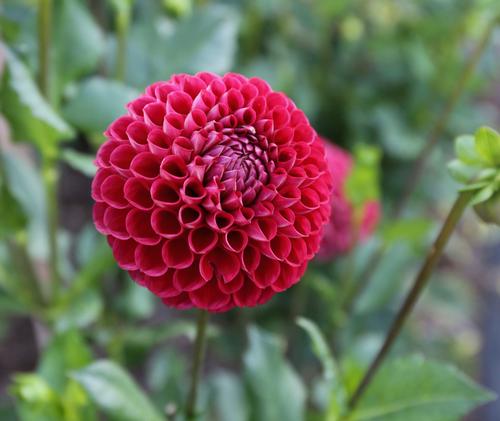
Dahlias Like it Warm, Not Hot
Like most plants, dahlias evolved in a specific location and unique ecosystem. They are native to the mountains of southern Mexico and Central America, where summer days are warm (80-85°F) and nights are cool (65-70°F). Growing conditions in the Pacific Northwest are similar, which makes it an ideal place to grow dahlias. In areas that are warmer or have more extreme temperature fluctuations, growing dahlias requires a little more planning and attention.
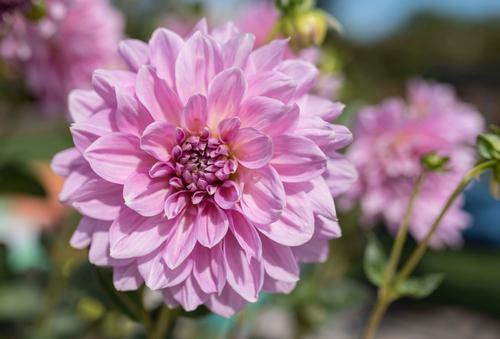
Full Sun Isn’t Always Best
Dahlias are sun lovers and more sun usually means more blossoms. But when the sun is too hot and temperatures are too high, the plants may stop flowering. To protect your dahlias from excess heat, choose a planting location with half day rather than full day sun. Ideally, your plants would get full morning sun and filtered light in the afternoon. You can also try planting your dahlias beneath a shade tree. Overhead branches will protect the foliage from hot sun and also help reduce the air temperature.
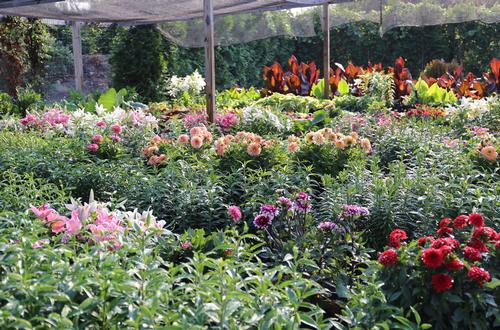
No Shade? Consider a Shade Structure
If you live in a hot climate and want to grow a lot of dahlias, consider putting up a shade structure. It's an ideal solution for yards without any natural shade. Polyethylene shade cloth lasts for many years and you can filter out as little as 20% of the light or as much as 80%. For growing dahlias, 40% shade is a good option.
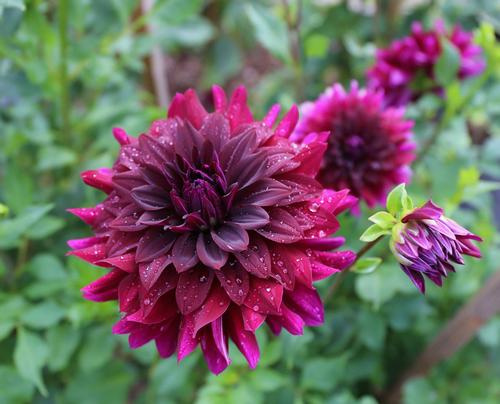
Mulch to Cool the Soil
Dahlias have shallow feeder roots that are about 1” below the soil surface and extend as much as 18” in all directions. Covering the soil with 2-3” of mulch will insulate these roots and help protect them from extreme heat. Make sure the mulch isn’t thicker than 3” and that it lets water flow through into the soil. The best time to mulch is early July -- once your plants are growing strong and before it gets too hot.
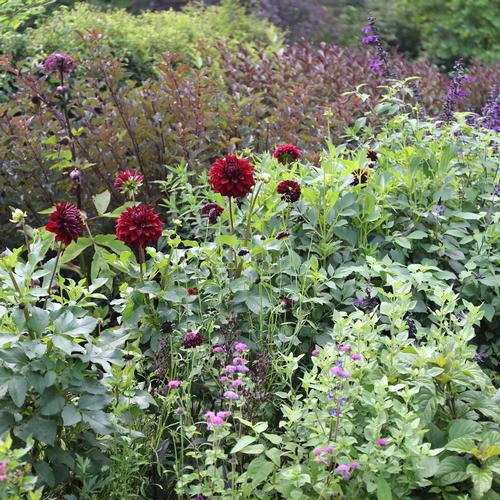
Provide Good Drainage and Lots of Organic Matter
Dahlias love growing in rich, humusy soil. At the beginning or end of the growing season, enrich the planting area with compost, shredded leaves or rotted mature. Loose, rich soil encourages strong root growth and also absorbs moisture, so it’s available when needed.
Well drained soil is especially important in areas that get heavy summer rains. Soggy soil can suffocate dahlia roots and cause the tubers to rot. If the soil in your yard is naturally heavy, consider growing your dahlias in raised beds with 10-12” sides. You can fill the beds with the best possible soil and ensure there will be excellent drainage.
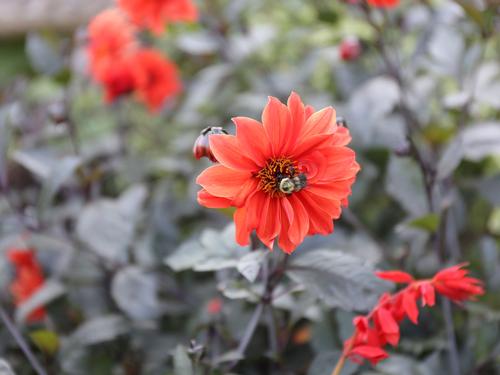
Water Wisely and Consider Drip Irrigation
If natural rainfall is inadequate, the best approach is to water your dahlias deeply once per week. Drip irrigation is ideal for dahias. If you are hand watering, water at the soil level and avoid wetting the foliage as this can encourage powdery mildew.
Though dahlias need consistent moisture, they will not tolerate soggy soil. This can be a challenge in tropical climates with wet summers. In these areas, consider planting dahlias in containers. Use a high-quality growing mix and, if possible, provide some shelter from heavy rain.
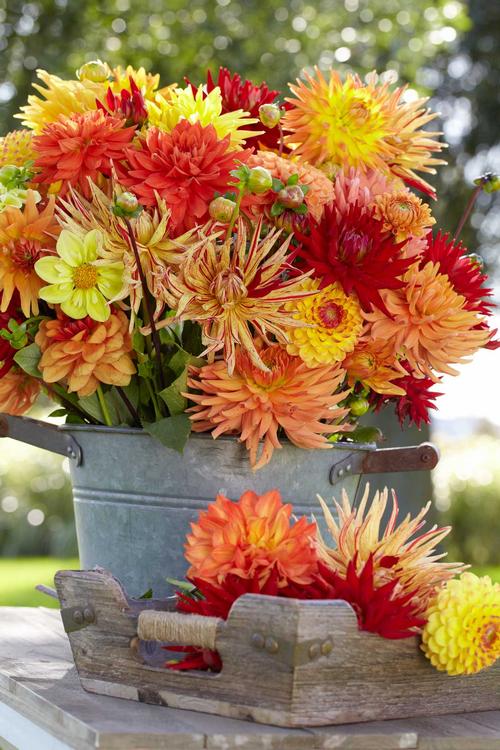
Mist On Hot Days to Keep Dahlias Cool
Dahlia growers in hot climates, including Australia, use water to cool their plants on hot days. You can install a misting system or just use a watering wand to spray the foliage once or twice a day. This extra moisture means the plants don’t need to work as hard to stay cool.
Feed Your Plants to Keep Them Strong
It's more difficult for hungry plants to be strong and resilient. At planting time, incorporate a 5-5-5 fertilizer, following package directions. Or apply a time release fertilizer such as Osmocote.
Once your dahlias start to bloom, fertilize them every two weeks during July and August. Use a water soluble fertilizer formulated for roses or tomatoes. Or use a low or no-nitrogen organic fertilizer such as Alaska MorBloom.
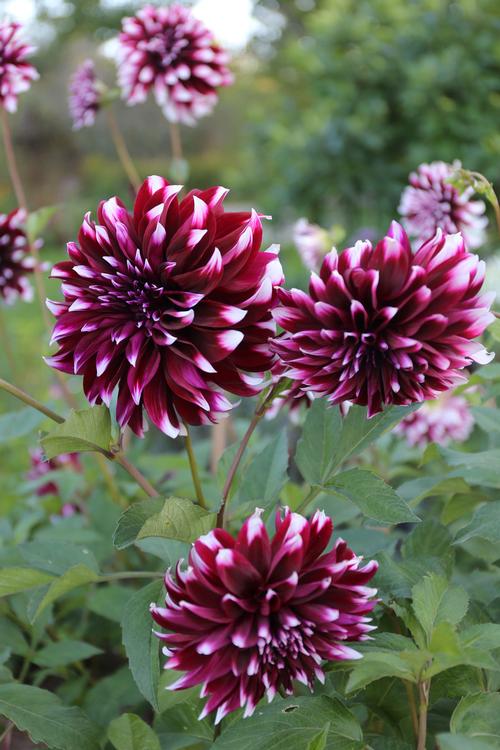
Grow Heat-Tolerant Dahlia Varieties
Gardeners in Georgia, Alabama, Texas and other southern states have found that some dahlia varieties tolerate heat better than others. The list below was gleaned from a number of different sources.
Akita, Babylon Red, Ben Huston, Belle of Barmera, Bishop of Llandaff, Blackberry Ripple, Cornel, Ferncliff Copper, Hamari Gold, Kelvin Floodlight, Kidd’s Climax, Lady Darlene, Lavender Perfection, Mingus Alex, Otto’s Thrill, Penhill Dark Monarch, Penhill Watermelon, Pooh, Rip City, Senior Ball, Show N Tell, Spartacus, Tartan, Thomas Edison, White Perfection, Winkie Colonel, Vasio Meggos, Zorro
It’s also good to ask around and get recommendations from local gardeners. You may find pass-along varieties that have proven to be particularly good for your region. An alphabetical list of heat-tolerant dahlias, recommended by members of the Dahlia Society of Georgia can be found HERE.
If you garden in hardiness zones 9 or 10, where winters are usually frost-free, you may want to consider planting dahlias in the fall for winter blooms. Here are some tips from a flower farmer in Orlando, FL.


